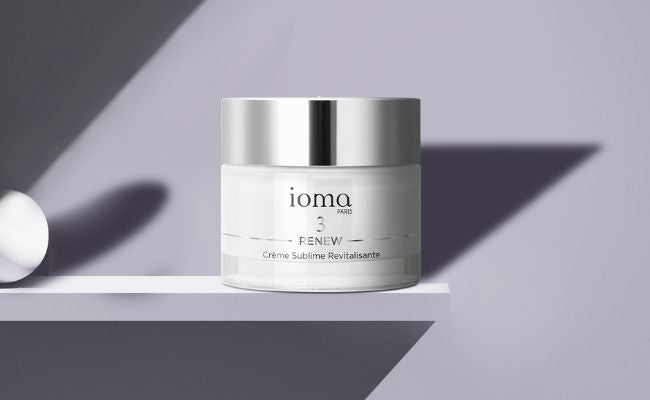
Melanogenesis and its role in the appearance of pigment spots
The mechanism of melanogenesis
The cells responsible for melanin production, melanocytes, are located in the basal layer of the epidermis. Melanogenesis is primarily triggered by the sun's UV rays, which stimulate these melanocytes to produce melanin, forming a protective barrier against external aggressions. Melanin comes in two types: eumelanin, which is dark brown to black in color, and pheomelanin, which is red to yellow in color. The process occurs in three phases:
- Melanocyte activation: Sun exposure activates the enzyme tyrosinase, which triggers the synthesis of melanin from the amino acid tyrosine.
- Melanin synthesis: Melanin is produced in the form of eumelanin or pheomelanin, influencing the skin's natural color and its ability to protect itself from UV rays.
- Transport and distribution: Melanin is then transferred to keratinocytes, where it forms a protection around the cell nucleus to reduce UV damage.
Hyperpigmentation: a disorder of melanogenesis
When there is an overproduction or poor distribution of melanin, pigment spots can appear. This hyperpigmentation phenomenon often results from prolonged exposure to UV rays, hormonal changes, or skin aging. The most common types of pigment spots include:
- Sunspots: caused by excessive exposure to UV rays, they appear on the most exposed areas (face, hands, décolleté).
- Melasma: Often triggered by hormonal changes, this type of hyperpigmentation is common during pregnancy or the use of hormonal contraceptives.
- Age spots: With age, melanin production becomes irregular, leading to the appearance of dark spots.
Skin aging and pigment spots
Skin aging accentuates irregularities in melanin production. The cells responsible for skin renewal slow down their activity, and melanocytes, although fewer in number, become more active and produce melanin irregularly. This phenomenon, coupled with years of sun exposure, leads to visible spots, which often become more pronounced with age. In addition to sun damage, the skin undergoes oxidative stress caused by free radicals, which accelerates aging and intensifies the appearance of pigment spots. To counter these effects, it is essential to adopt specific skincare products that target melanin production and strengthen skin protection.
Regulate melanogenesis to even out skin tone
Regulating melanogenesis is crucial for preventing the appearance of pigment spots. One of the first steps is to reduce UV exposure with appropriate sun protection. Daily application of a broad-spectrum sunscreen prevents overstimulation of melanocytes, thus limiting the risk of new spots. Next, using skincare enriched with depigmenting active ingredients directly targets existing spots and prevents the formation of new ones. These active ingredients work by inhibiting tyrosinase activity, thus regulating melanin production and evening out its distribution throughout the epidermis.
The multi-target approach to treating pigment spots
To correct pigment spots, care must combine several actions:
- Tyrosinase inhibition: reduce melanin production by limiting the activity of this enzyme.
- Antioxidants: protect the skin against free radicals which accelerate skin aging and the appearance of dark spots.
- Cell renewal: promotes gentle exfoliation of pigmented cells for a brighter complexion.
A well-thought-out skincare routine , incorporating these actions, helps prevent and treat pigment spots, while restoring the skin's natural radiance.
A tailored routine to prevent hyperpigmentation
In addition to sun protection, incorporating specific serums and creams into your daily routine is essential for evening out skin tone and preventing the appearance of new spots. It's recommended to adopt skincare products that respect skin sensitivity while providing targeted benefits to reduce hyperpigmentation. A rigorous routine combined with tailored formulas can restore the balance of melanogenesis and provide an effective solution for skin prone to pigment spots.





